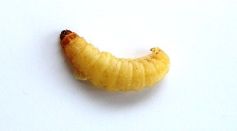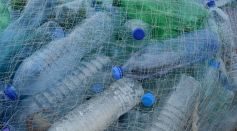Tags: Plastic
Leafcutter Bees Using Plastic Might Not Be As Good as Previously Thought
Study Reveals Bioplastics Are as Harmful as Traditional Plastic
Glitters on Makeup and Dresses Are Damaging Freshwater Habitats
Scientists Trace Microplastic Pollution Almost Everywhere, It's Become Airborne
P&G Aims to Halve Its Use of Virgin Petroleum Plastics by 2030: Here's How It Plans to Do So

Plastic-Eating Waxworms: Are They Really Pollution Busters?

Beer Company Creates Edible 6-Pack Rings to Feed Marine Life

Italy is Now Using Pasta Straws to Help Reduce Plastic Waste

Gift Ideas You Can Buy That Don't Require a Gift Wrapper

New Recycling Method Turns All Plastic Waste into High-Quality Plastic

Kitkat will no longer use plastic packaging in Japan

Plastic problem in the Philippines: Poverty is the cause?

Newly invented bacteria eats plastic

Starbucks to replace plastic straws with sippy cups for adults
Polyurethane Waste May Be Degradable With New Technique
Greener Plastic: The Search Is On
The best sustainable shopping bags
Magnetic Coils Created To Break Down Plastics In Ocean
Microplastics are No Match for These Tiny Magnetic Coils
Plastic Waste: How The Industry Is Fighting To Keep Polluting The World
Most Popular

Extreme Weather Science Reveals How Climate Change Patterns and Global Warming Transform Earth's Weather

What Causes Tornadoes and How They Form: Tornado Science Explained for Extreme Storms

Why Pandemics Keep Happening: Pandemic Cycle and the Rise of Emerging Diseases

How Planets Form: Planet Formation and Protoplanetary Disks in Solar System Creation




